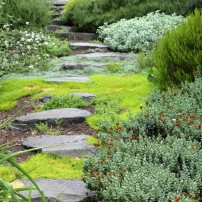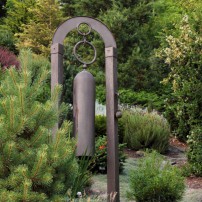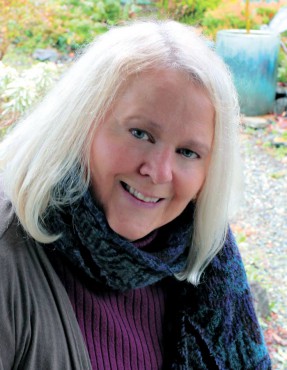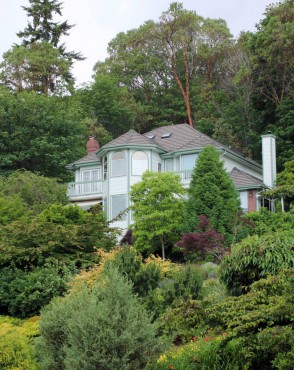
Nestled into a southwest-facing slope overlooking Port Washington Narrows and Phinney Bay in East Bremerton is a 4-acre garden paradise. It’s a destination for many garden lovers.
But the garden wasn’t always like this. From humble beginnings, it was transformed with the hard work of its dedicated homeowners, John and Santica Albers.
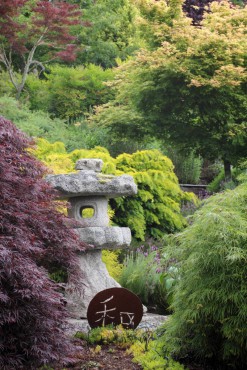
In 1998, the couple fell in love with the home surrounded by 2 acres. Back then, the garden contained an acre of lawn and an orchard, while blackberries and other invasive plant species overran most of the property.
“We saw potential in the large lawn that we had in front of the house, and I was enamored by the nearly pristine woodland behind it,” John Albers said. “I started gardening here as I’ve done in many other places, with no specific goal in mind of developing a very large garden.”
When they bought more land surrounding the property, the garden grew to 4 acres.
In 1999, Albers took on the task of identifying the plant species living in the half-acre woodland he named Madrona Woods. He found that nearly all the species there were native to the Pacific Northwest. One of those madronas (Arbutus menziesii) is estimated to be more than a century old.
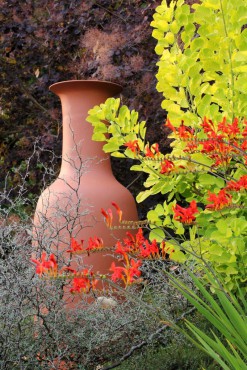
The couple recently purchased another chunk of land bordering their garden. Albers would not divulge whether they bought the last addition in order to save a large sequoia tree that stands as the tallest sentinel on the hillside. However, there was a twinkle in his eye as he spoke about the conifer and the development of a new garden room they call the Redwood Sanctuary.
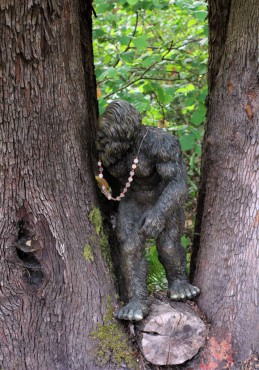
Over the years, Albers collected many specimens of plants, while the property evolved into 14 separate rooms. Each one has its own, unique theme and plant palette, depending upon the goal for each area.
Memorial Gardens
In the lower part of the property, Albers planted dawn redwood trees (Metsequoia glyptostroboides). Although he hadn’t originally planned to have a woodland garden there, circumstances in life gave the couple a reason to plant more trees and create a shady garden.
The change came about when rather than letting a beloved collection of rhododendrons deteriorate, John Lentz — an aging relative of the Albers as well as a good friend — asked Albers if he could find good homes for them. Albers agreed to take them, and so the Lentz Garden came to be.
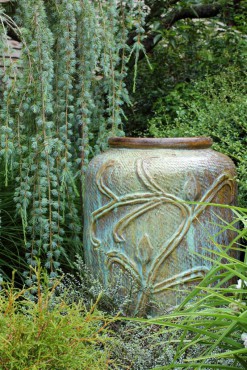
Today, Japanese maples, striped bark maples, cryptomeria and dawn redwoods turn this garden into a wonderland of shifting shadows and textures. Lentz’s collection now rubs elbows with native plants as well as shrubs in the same Ericaceae family as the rhododendron. Lentz lived long enough to see his rhododendrons (some of which were over 35 years old) flourishing in their new environment.

Stepping out of the woodland, you come to an open garden room named the Betty Albers Memorial Garden in memory of Albers’ mother. The only space on the property with a lawn, yet not a typical one. Albers planted tough, drought-tolerant orchard grass — a mix of fescue, perennial rye and clover to fix nitrogen into the soil.
On why the clover was added, Albers explained, “We don’t fertilize the lawn, and it requires a minimal amount of water.”
Even in a year of extreme drought, the tough lawn is staying mostly green.
“We have a few brown spots this year. It’s doing pretty well, but we don’t worry about it because it always comes back,” Albers said with a laugh.
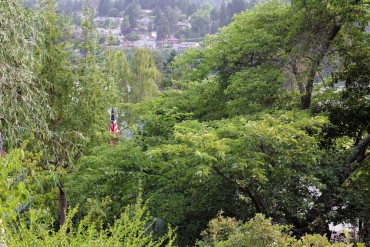
Small, flowering plants also grow in the lawn, planted for the pollinators. Albers planted roses, small rhododendrons and unusual flowering trees and shrubs in the beds because his mother always grew flowers in her own garden. With the addition of a bench, the garden became a quiet sitting place for contemplation.
Having a sustainable garden is important to the Alberses. They minimize supplemental watering to a few beds, while the rest of the garden has to weather the local climate conditions. New plants are watered regularly until they are established and then left to grow without irrigation.
Albers is optimistic about this year’s drought.
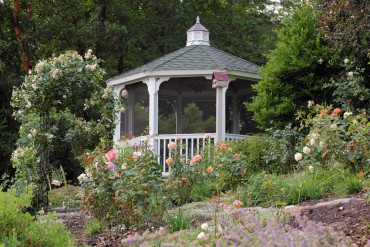
“The plants are suffering and we won’t know until next spring how well they did. Some won’t make it, but the vast majority of the plants will,” he said. “We’ve had a lot of experience in the past with dry summers.”
With the added yearly compost mulch and a soil rich in soil microbes, the plants thrive and grow through extended drought periods.
“Without that, most of the plants would die,” he explained. “Many people don’t know that fact about mycorrhizae or even know what it is.
“In the spring time, one of the big things we do while the soil is still moist, we generally put a good mulch load on the gardens,” he said.
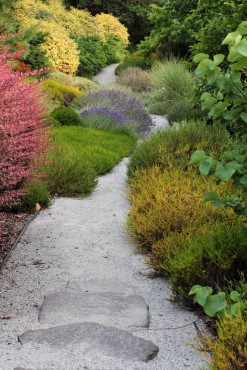
Albers’ passion for the garden shows throughout. He considers himself a plant collector — he grows more than 150 conifers alone, many of them dwarf. He considers the garden a paradise for Santica and himself but also a paradise for visitors to the garden.
It’s not surprising to hear him say, “The garden is a big part of our lives,” when you see the extensive plantings and the expansive gardens on the slope surrounding their home.
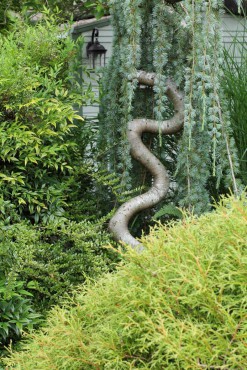
Besides maintaining the 4 acres, Albers works full time as a University of Washington professor. Yet he found time to set up a foundation and make the garden a nonprofit entity. He also found time to write an impressive book about the garden, “Gardening for Sustainability.” He is writing another book, titled “Your Garden Can Make a Difference: Steps to Enhancing Urban Biodiversity.”
Santica also has a hand in the garden.
“For me, the garden is an extension of the home,” she said.
She played a major role in designing the transition from the woodland to the Stroll Gallery. She also came up with the idea to develop a 9/11 garden in memory of those who lost their lives on that fateful day.
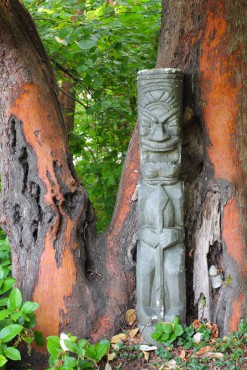
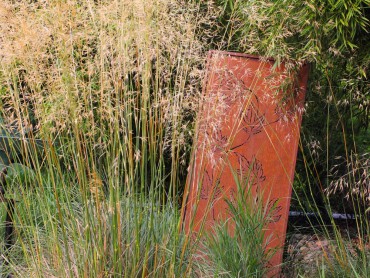
Santica enjoys collecting art for the garden. When an art piece speaks to her, she buys it and brings it home. Then she finds the perfect position for it as a focal point, complementary piece or contrasting accent. She is not above placing humorous pieces in the garden, yet she manages to find the right place for them, such as the sculpture of Big Foot in the shadows of a large, native madrona.
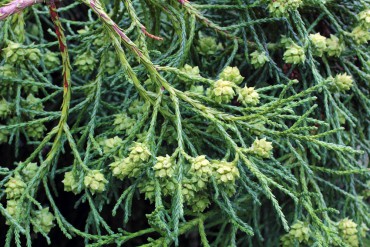
One of her favorite places in the garden, aptly named Santica’s Perfect Solitude, is nearly at the top of the slope. A gazebo stands there, with views of Mount Rainier to the southwest and the tree canopy of the garden and sweeping vistas of the water below to the west. Surrounding the gazebo is a rose garden. Her other favorite garden is the Lentz Garden.
Albers Vista Garden is available for group tours by appointment, and individuals can tour the garden on garden open days throughout the growing season.




